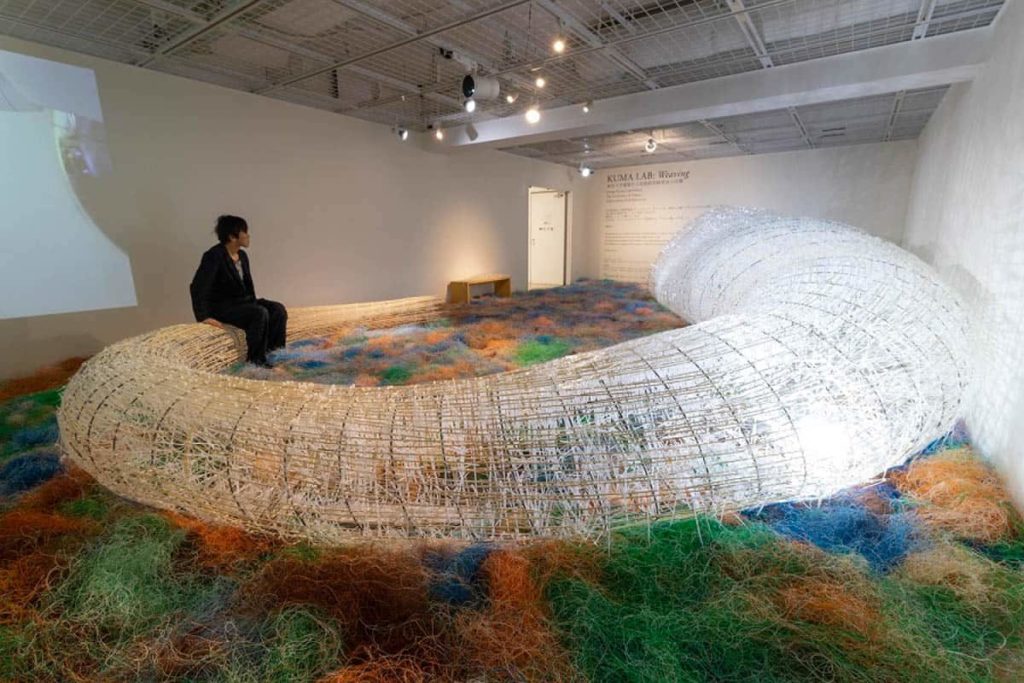- Kengo Kuma Laboratory, The University of Tokyo
- Kengo Kuma
You might know Kengo Kuma as the architect of the 2020 Tokyo Olympic Stadium, built using traditional wood techniques. It’s his way of situating design. In his book, Anti-Object: The Dissolution and Disintegration of Architecture (2008), Kuma professes to recover a sense of place through a particular kind of immateriality, produced by an innovative use of materials.
His installation titled NAMAKO will feature as the inaugural ephemeral architecture project to launch this year’s DESIGN Canberra Festival in November. It will activate Aspen Island in Lake Burley Griffin for the duration of the festival.
“DESIGN Canberra is honoured to work with one of the world’s leading architects to design the inaugural ephemeral architecture project. The project promotes experimental and authentic design, fostering international collaboration and design education,” says Rachael Coghlan, CEO of Craft ACT and Artistic Director of DESIGN Canberra 2018.
A prototype of what will eventually be a 3-metre-high, 12-metre-wide installation has been revealed in Tokyo. The installation will be composed of a steel rod frame structure and mesh made with bio-acrylic rods woven together by zip-ties.
Inspired by the Japanese word for sea cucumber “namako”, Kuma’s installation reflects the unique characteristics of the animal’s softness, transparency and form, allowing audiences to interact with the installation and creating a rich relationship to the surrounding context.
Like many of Kuma’s designs, NAMAKO conceptually and physically follows his pursuit of different types of weaving, a process he believes underpins the fundamentals of architecture. His work weaves together different methods, materials, people, ideas and spaces to present innovative designs on a global scale, and has been supported by faculty and students at the University of Tokyo Kuma Lab.
“Our laboratory investigates the possibilities of weaving through many projects and other activities. This includes our ongoing installation project in Australia that will be shown in DESIGN Canberra, which is produced through a reckless weaving process,” says Kengo Kuma.
This project will celebrate the 25th anniversary of Canberra’s treasured sister city relationship with Nara in Japan. Kuma’s international reputation and considered approach to architecture was critical to his selection to design the installation. Kuma’s believes that “a place is rich not because of its natural environment, resources or skilled craftspeople, but instead gains its value through the relationship between those things”.
Architecture students from the University of Canberra have been involved in the collaborative process as part of a Faculty Led Program to Japan, alongside fellow University of Tokyo students, weaving the Namako prototype and challenging them to think beyond the boundaries of the concept.
Organised by Craft ACT, DESIGN Canberra Festival 2018 is on 5-25 November.



